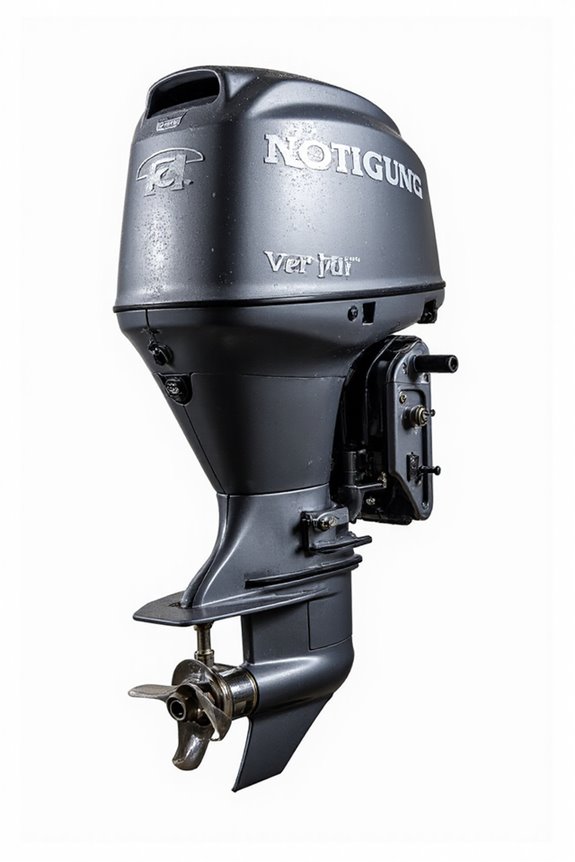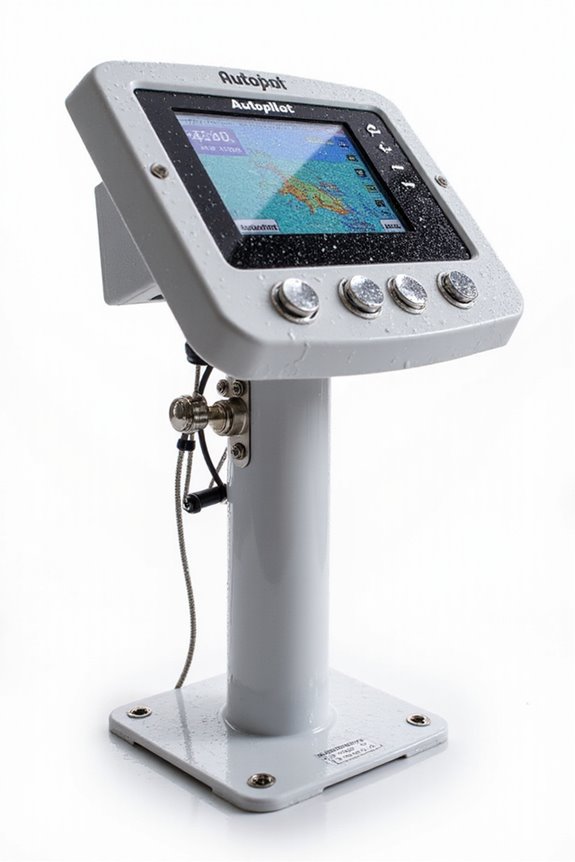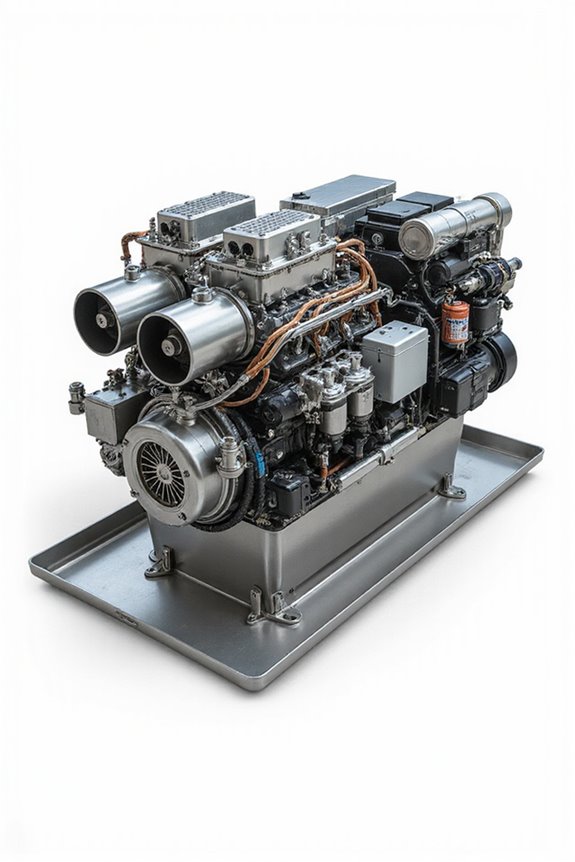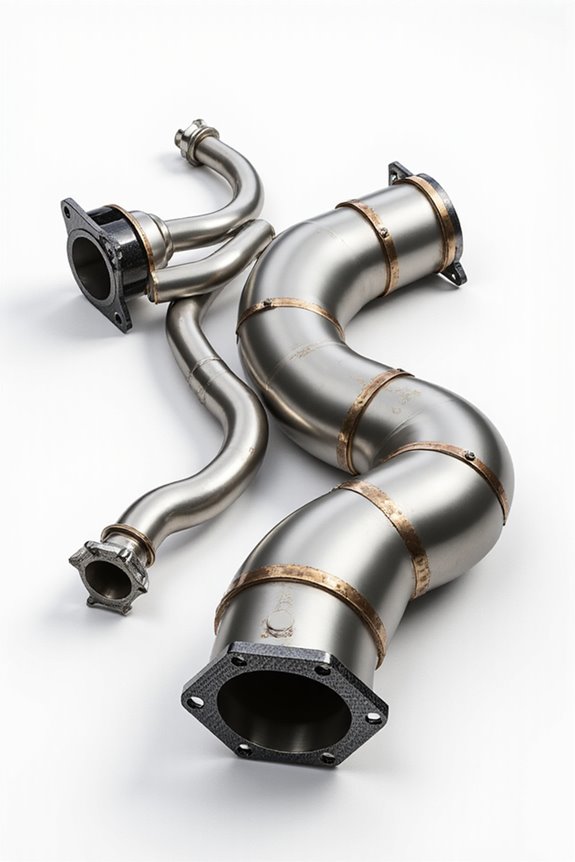If we want to squeeze more miles from our outboard motors, we should start by tuning the engine’s “brain”—the Electronic Control Module—which smartly adjusts fuel mix for efficiency. Keep a steady hand on the throttle between 60% and 80% power, trim the engine right, and maintain parts like spark plugs and fuel filters regularly. Ever tried route planning to dodge unnecessary revs? It really helps. Curious how prop design and tech upgrades can further boost mileage? Stick around and explore those ideas next.
Key Takeaways
- Use the ECM to monitor engine sensors and optimize fuel mixtures for peak performance and reduced fuel waste.
- Maintain steady throttle and operate between 60%-80% motor capacity for optimal fuel consumption.
- Regularly service spark plugs, fuel filters, and oil to prevent inefficiencies and extend engine lifespan.
- Select propellers with appropriate pitch and size to minimize drag and maximize thrust efficiency.
- Employ navigational strategies like GPS route optimization and steady speed control to reduce unnecessary fuel burn.
Understanding Engine Technology for Fuel Savings
Even if you’re not a tech whiz, understanding how modern outboard engines work can really help us save fuel—and isn’t that what we all want? At the heart of these engines is the Electronic Control Module, or ECM, acting like the boat’s brain. It uses various engine sensors to constantly track everything—from throttle position to temperature—making fine adjustments to fuel mixtures for peak performance. Think of those sensors as tiny detectives that help keep the engine running smoothly and efficiently. By precisely controlling fuel mixtures based on real-time data, ECMs prevent waste and improve fuel economy. So, even if we don’t see these high-tech helpers, they’re working hard to stretch every drop of gas. Pretty clever, right? Knowing this gives us a good edge in managing our fuel use wisely.
Managing Operating Conditions to Optimize Fuel Use
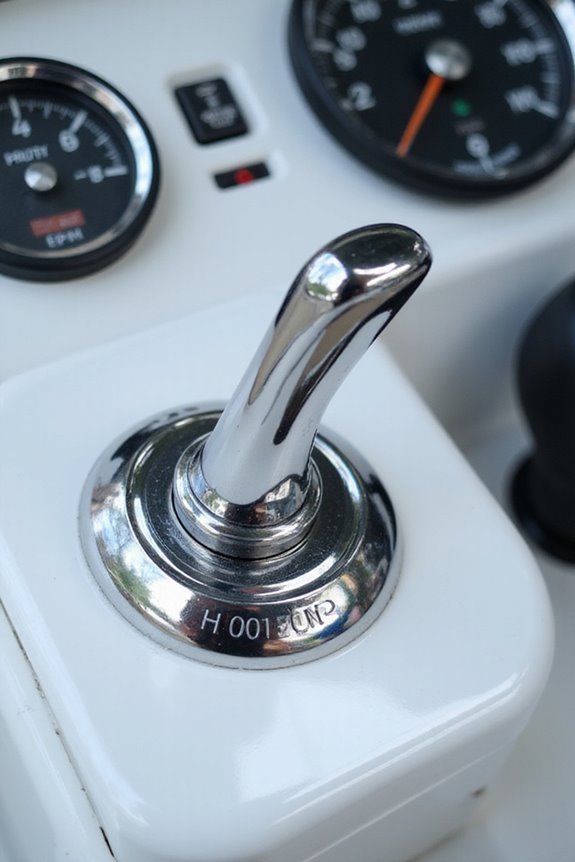
Since we all want to make the most of every gallon, managing the conditions we operate under is key to squeezing out better fuel economy from our outboard motors. Ever noticed how weather impact can sneakily hike fuel use? Calm waters and smooth sailing reduce drag, so we’re not asking our engines to fight wind or waves. And let’s talk throttle control—sudden bursts or stops are fuel guzzlers. Keeping speed steady, ideally between 60% and 80% of our motor’s capacity, helps the engine run efficiently without wasted fuel. Plus, adjusting engine trim to match conditions can prevent unnecessary resistance. Together, these small actions add up, making trips smoother for both the boat and our fuel tanks. Who knew saving fuel could feel this good?
Patterns of Fuel Consumption in Outboard Motors
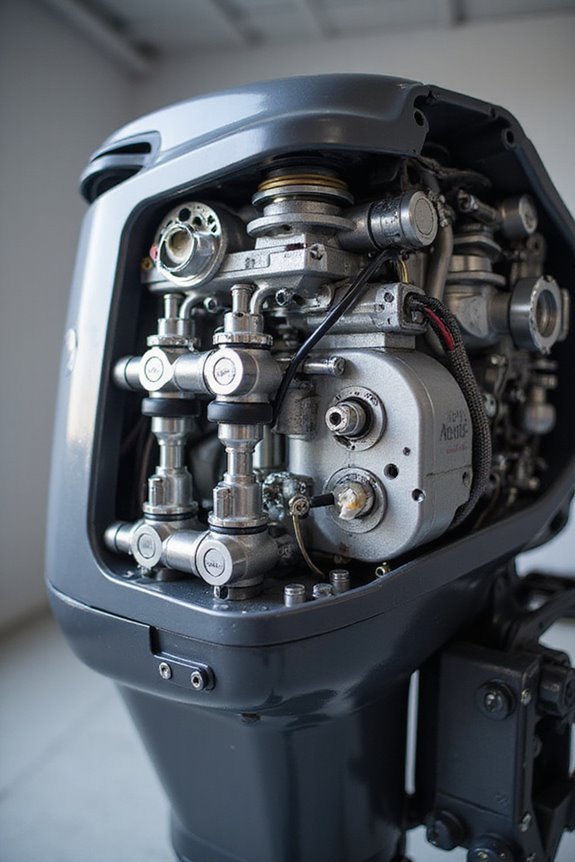
Let’s plunge into how fuel consumption patterns actually play out in outboard motors and what that means for us on the water. Different engine types, like two-cycle versus four-cycle, show distinct consumption patterns—with four-stroke engines generally offering better fuel efficiency and smoother engine performance. Ever wondered how propeller design influences fuel use? Well, pitch and size play a big role, too small or large throws off engine load, cutting efficiency. Horsepower impact can’t be ignored either; higher horsepower often means more fuel burned, especially under full throttle. Environmental factors such as wind and water conditions also tip the balance. Thankfully, technological advancements—like direct injection and engine management systems—help us squeeze out more miles per gallon, making every drop of fuel count while we enjoy our adventures.
Maintenance Practices That Enhance Efficiency
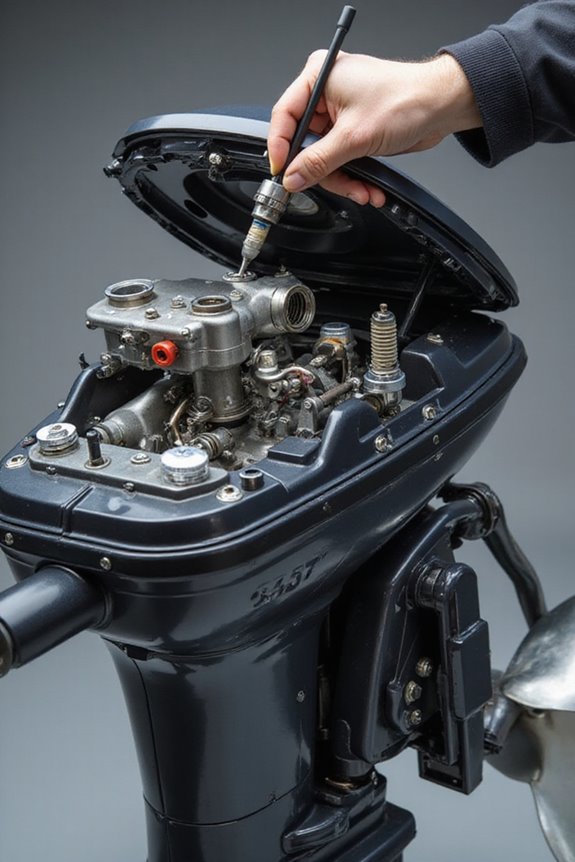
We’ve seen how different engines and propeller choices affect fuel in your outboard motor, but there’s more to squeezing every drop of efficiency than just picking the right parts. Regular maintenance plays a huge role—think of spark plug replacement as giving your engine a fresh spark for better combustion. Neglecting this means wasted fuel and rough runs. Fuel filter maintenance is just as essential; a clogged filter? That’s like trying to breathe through a straw, which slows everything down. Plus, routine oil changes and tune-ups keep the engine running smoothly, preventing those sneaky fuel guzzlers like clogged injectors. By treating our outboards right, we not only save fuel but extend their life. So, next time you’re gearing up, don’t skip these simple steps—we’re all in this for smooth, efficient rides!
Navigational Techniques to Reduce Fuel Waste
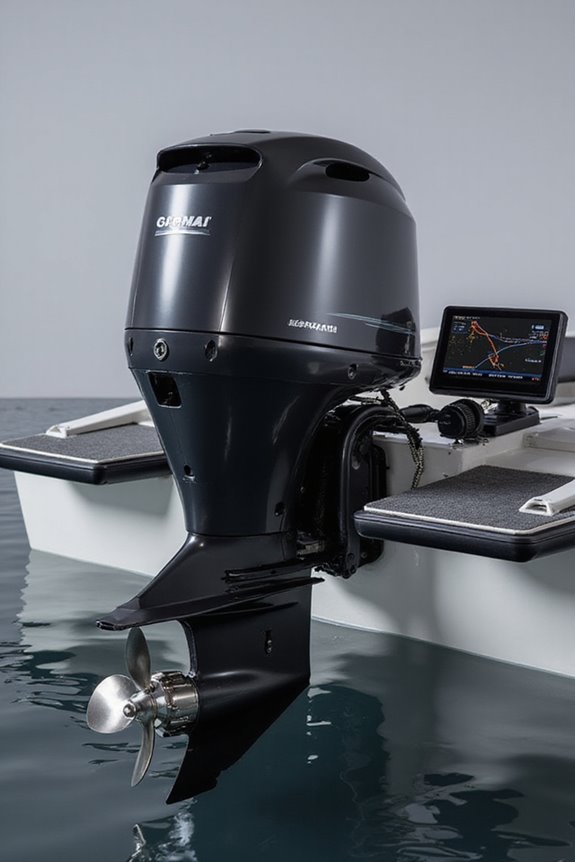
A smart approach to steering our waters can make a bigger difference in fuel efficiency than you might think. By embracing route optimization, we can plot the smoothest, most direct paths using GPS, cutting down on unnecessary detours that sneakily guzzle fuel. Pair that with anticipatory navigation—essentially predicting obstacles like buoys or curious wildlife ahead—and we avoid sudden accelerations and stops that burn extra gas. Ever noticed how sticking to a steady speed feels easier and saves fuel? That’s no accident. We should also factor in wind, currents, and tides to glide more effortlessly. So, before setting off, let’s plan smartly, stay alert, and navigate predictably. After all, efficient boating isn’t just good for our wallets—it’s kinder to the waters we love exploring together.
Innovative Upgrades and Solutions for Better Mileage
Even though mastering navigational techniques is key, boosting fuel efficiency often means upgrading our outboard motors with the latest tech and clever tweaks. We’re talking smart upgrades like Mercury’s VesselView, which offers real-time fuel data, or automatic trimming systems that keep your engine aligned perfectly without you lifting a finger. Ever thought about how a custom-pitch propeller or variable pitch might save you precious fuel? These fuel solutions reduce drag and improve thrust, giving your boat the smoothest, most efficient ride possible. Plus, keeping weight down and balancing cargo can make a surprising difference. Don’t forget regular engine tune-ups and fuel additives—they keep everything running clean. With these smart upgrades, getting better mileage doesn’t have to be rocket science; it’s just smart boating. In addition, utilizing AGM deep cycle batteries can provide reliable power for your equipment, enhancing overall efficiency on the water. Ready to plunge into?
Frequently Asked Questions
How Does Altitude Affect Outboard Motor Fuel Efficiency?
It is understood altitude effects cause outboard motors to lose about 3% horsepower every 1,000 feet, directly impacting engine performance. Together, we can understand how thinner air challenges fuel efficiency and power as we explore these changes.
Can Fuel Additives Improve Outboard Motor Mileage?
Yes, we’ve found fuel additives can considerably boost outboard motor mileage improvement by cleaning engine parts and enhancing combustion. When we use them regularly, our engines run smoother, saving fuel and keeping us connected on the water.
What Impact Does Cold Weather Have on Fuel Consumption?
It is understood that cold weather increases fuel consumption because thicker fluids and longer warm-ups strain our engines. Together, we can minimize this impact by maintaining equipment and adjusting how we operate in these chilly conditions.
Are Biofuels Compatible With All Outboard Motors?
Did you know E10 fuel contains up to 10% ethanol? We’ve found biofuel compatibility varies—some outboard motors handle it well, but others risk performance issues. Let’s always check engine specs to keep our engines running smoothly together.
How Do Different Brands Compare in Fuel Efficiency?
When we compare brand performance, Yamaha’s fuel technology shines with precision injection, Mercury boosts efficiency via FourStroke engines, Suzuki excels in Lean Burn tech for savings, and Evinrude focuses on eco-friendly, reliable engines—we’re all in this together.

